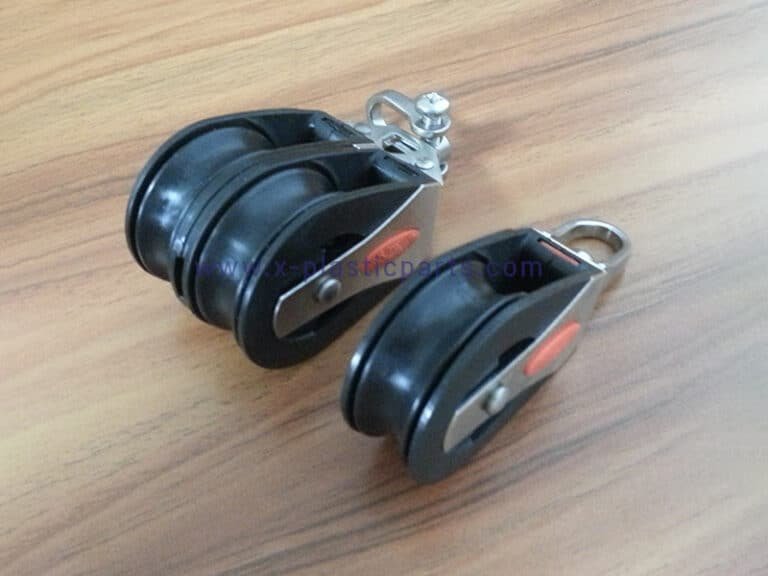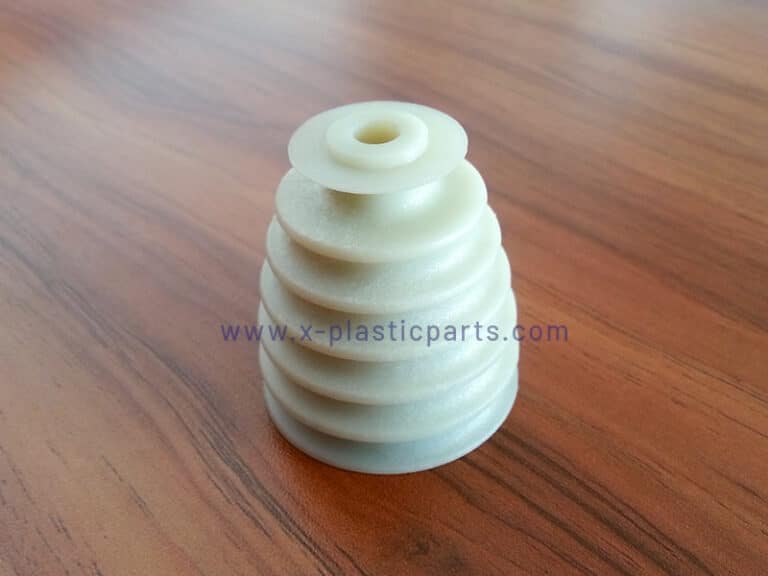Plastic gears have become essential components in many modern machines and devices. Their application spans consumer electronics, automotive systems, medical devices, and industrial machinery. The choice of plastic gear material affects performance, lifespan, and costs. If the material does not match the application, issues like wear or failure can occur. Selecting the right plastic gear material ensures reliable operation and controls expenses.
Plastic Gear Material Selection Considerations
When choosing plastic material for gear, focus on mechanical properties such as bending strength, contact fatigue strength, impact strength, and friction coefficient. Thermal properties like heat resistance and linear expansion coefficient are also important. Other factors include moisture absorption, chemical resistance, and ease of processing. These elements influence how plastic gears perform. High bending strength handles loads without breaking. Low moisture absorption prevents size changes in humid conditions. Good heat resistance avoids softening at high temperatures. Chemical resistance extends life in corrosive environments. Processing ease reduces manufacturing time. Evaluate load, speed, environment, and lubrication to select the best plastic for the gear.

Common Plastic Gear Materials
Among the most common materials used for plastic gears are polyamide (PA), polyoxymethylene (POM), and polycarbonate (PC). Each has distinct properties and typical uses.
PA (Polyamide)
Polyamide, commonly known as nylon, is a plastic gear material with self-lubricating properties and impact resistance. It performs well in applications subjected to moderate heat and humidity, though its dimensional stability can vary slightly with moisture absorption. For plastic gear applications, PA6 and PA66 are two widely used variants; PA66 offers higher tensile strength and better heat resistance, making it suitable for higher temperatures and larger gears. PA6 suits larger diameter gears with better shock absorption and low friction, but lower wear resistance and stability. Nylon gears are popular in conveyor systems, packaging equipment, and industrial automation, where noise reduction and vibration damping are important.

POM (Polyoxymethylene)
POM is a high-strength material commonly used to make gears due to its remarkable stiffness, low friction, and superior dimensional stability. Its low moisture absorption keeps the gear dimensions consistent. The material resists many chemicals, making it ideal for gears employed in harsh environments. Injection-molded gears made from POM often find their use in household appliances, automotive components, and power tools, where durability and quiet operation are priorities.

PC (Polycarbonate)
Polycarbonate is recognized for its excellent impact strength and thermal resistance. PC offers better resistance to high shock loads and is often used for gears exposed to sudden impacts. While not as wear-resistant as nylon or POM, PC’s toughness makes it suitable for gears that require high durability in demanding mechanical systems. Its ability to be injection molded with complex shapes allows for flexible design possibilities.

Many plastic gear materials can be enhanced through modification to boost specific properties. For example, adding fiberglass or carbon fiber fillers increases the strength, stiffness, and heat resistance of nylon and POM gears. Lubricants can be incorporated to further improve self-lubricating characteristics, reducing wear and extending lifespan. Modified materials fit high-load, high-speed, or high-temperature scenarios. They address base material weaknesses but may raise processing complexity and costs.
Other Gear Plastics
Besides PA, POM, and PC, other materials such as polyether ether ketone (PEEK) and thermoplastic polyesters are occasionally used for specialized plastic gears. These materials offer excellent mechanical properties and chemical resistance, but at a higher cost. While not as common, they are valuable options for high-performance gear solutions in aerospace, medical, and food processing industries.
For a comparison of plastic vs metal gear, please click here.

Comparison of Common Plastic Gears
The table compares PA, POM, and PC based on mechanical and chemical properties.
| Property Dimension | PA | POM | PC |
|---|---|---|---|
| Bending Strength | High, but decreases with humidity | Medium, good fatigue resistance | High, but prone to stress cracking |
| Tensile Strength | Medium to High | High | Medium |
| Wear Resistance | Good, self-lubricating | Excellent, low friction | Lower, needs lubrication |
| Impact Strength | Excellent, absorbs vibration | Weak, brittle | Good, but low fatigue strength |
| Heat Resistance | Medium (80-120°C) | Below 100°C | Better (above PA and POM) |
| Moisture Absorption | High, causes size changes | Low, stable dimensions | Low, stable dimensions |
| Chemical Resistance | Good for organics and alkalis, weak for acids | Excellent for organics | Good, but corrodes in strong acids |
| Self-Lubrication | Yes | Low | No |
| Typical Application | Conveyor systems, industrial automation | Household appliances, automotive parts | High-impact gear systems |
| Typical Cost | Low | Medium | Medium |
Advantages and Disadvantages of Plastic Gears
Advantages of Plastic Gears
Plastic gears are lightweight, reducing system weight. They resist rust in wet or corrosive environments. Their ability to absorb shock and vibration results in quieter operation, which is vital in consumer devices and industrial applications. The friction coefficient is lower, often needing minimal lubrication. Injection-molded gear production allows high volumes at lower costs. Self-lubrication works well with metal pairs.
Disadvantages of Plastic Gears
Plastic gears have lower strength than metal, limiting high loads. Dimensional tolerances are less precise. Plastic gears can be sensitive to temperature fluctuations and environmental humidity, which may alter their dimensions and performance. Tooling costs for injection molding are high. Operation is limited at extreme temperatures.
How Material Costs Influence Gear Production Choices?
Material costs go beyond the initial purchase. Processing expenses, maintenance, and lifespan affect total outlay. Higher-cost materials may reduce failures and extend use, lowering long-term expenses. Lower-cost options can lead to more replacements if they wear quickly.
- For PA, low-cost suits high-volume, low-load nylon gears, but high moisture absorption may require drying, adding fees. In humid settings, PA saves upfront but increases repairs from size changes.
- POM at medium cost offers stability, reducing adjustments, but lubrication adds system expenses. It balances cost and performance in precision uses.
- PC, also medium cost, provides heat resistance to avoid high-temperature failures, but stress cracking needs modifications, raising processing fees. In hot applications, PC offsets costs through longer life. Choose based on the application to optimize economics.
Conclusion
Choosing the right plastic gear material is fundamental in achieving efficient, durable, and cost-effective gear designs. Flexiparts provides customized plastic gear solutions to meet specific requirements. Contact us and get a solution to meet your application.



